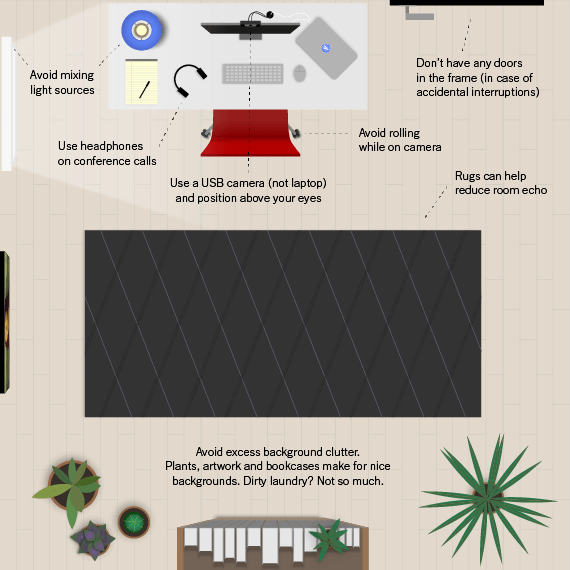Presentation Tips: How To Make a Virtual Presentation More Interactive
It may not come as a surprise, but presenting online isn’t the same as presenting in person—many speakers who are naturally good at public speaking struggle to transition to presenting virtually. When you remove the human element and try to speak to a computer screen, it can feel awkward and static, leaving the audience members disengaged. However, since the world has embraced hybrid working arrangements post-pandemic, it is time to beef up online presentations. Presenters must find more creative ways to captivate their audience and keep them actively involved throughout the presentation. Within this article, we’ve outlined key tips and strategies for you to use with your presentation to help you make a virtual presentation more interactive and help keep your audience engaged.
Leverage the tools that your platform provides
Making your virtual presentation more interactive is as easy as incorporating interactive tools provided by your platform into your presentation. From providing a concise summary of key points to interactive polls, quizzes, live Q&A sessions, and breakout rooms, there are numerous ways to keep your viewers actively involved. Encouraging interaction enhances engagement and retention and fosters a sense of connection and community among your audience. Embrace your creativity and think outside the box to create a truly interactive experience – your audience will appreciate the innovative approach and remember you for it.
Recommend that audience members have their cameras turned on
To enhance audience engagement and create a more interactive virtual presentation experience for viewers, we recommend that the presenter request cameras to be turned on. Presenters can fully read the room and actively gauge the audience's reactions in real-time by having cameras on. This allows for a more personalized and engaging delivery as needed, as presenters can adjust their tone, pace, and content based on the visual cues from their audience. Furthermore, seeing the faces of the attendees can create a sense of natural connection and community, making the virtual presentation feel more like a collaborative and interactive experience. By encouraging cameras to be on, presenters can foster a connection with their audience while simultaneously making a dynamic and engaging virtual presentation that will leave a more lasting natural impression on the audience.
Practice more to give a great presentation
As with anything, practice makes perfect. If the average presenter spends 20 - 50 hours practicing before a big in-person presentation, that time should be at least equal when presenting online. Preparing notes or a script in advance and practicing a natural delivery on camera is encouraged.
Whether you favor abbreviated notes or a full-line script, the key to a good presentation is to get comfortable with your delivery. Find a comfortable pace, pause deliberately, and insert placeholders for engagement opportunities. Practice your presentation until it feels comfortable to you. Record yourself on video and make sure that you are relaxed and smiling.
Good presentations always have great backgrounds
Presenting online is the same as being on a television screen. With today's high-definition video, every detail in the background is visible to your audience. Begin by making sure that you have a well-lit room. If you have a room with a window, always face the window so that the natural lighting does not cast a shadow over you. Add minimal touches of photos, art, and plants to give the space some character. But avoid any decorations that can be distracting. Consider using a plain digital background if you cannot access a well-lit, tidy, and minimalistic space.

What a great home-office video-calling setup looks like.
Presenting to an audience is all about eye contact
The number one thing that online presenters overlook is the element of eye contact. It is almost unnatural for the speaker to look at the camera instead of the participants' thumbnails. Online presenters don’t get the same feedback as in-person presenters do. However, the illusion of eye contact is vitally important for the audience for interactive engagement.
Did you know that making eye contact when presenting can make you appear more confident? Human beings are hardwired to respond to eye contact. From infancy, we recognize it as a form of connection. In social situations, we tend to associate eye contact with trust. However, virtual communication hinders this simple exchange the most.
You cannot afford to skip making the illusion of eye contact by keeping your gaze on the camera. But it is harder than you might think. If you don’t have the laser focus to do it on your own, some tools, like virtual teleprompters, can help.
Be sure to use eye-catching visuals
In today's fast-paced digital landscape, numerous distractions vie for our focus. Therefore, in virtual presentations, a pivotal factor for success lies in captivating your audience's attention and maintaining their engagement throughout the session. By incorporating visually striking graphics, images, and videos, presenters can elevate the impact of their delivery, creating a dynamic and memorable experience for their viewers. These visually appealing elements sustain audience interest and reinforce key concepts, making the content more digestible and engaging. In a virtual environment where attention spans are fleeting, eye-catching visuals can be the defining factor between a forgettable presentation and one that truly resonates with and enhances audience retention.
Use a virtual teleprompter
Apps like VODIUM provide a convenient way to keep your notes or scripts handy while presenting online. These apps are designed to sit on your video conferencing software and remain visible to only the presenter. The app offers many flexible uses with features like free-form text boxes and autoscrolling. Plus, the native placement of the VODIUM app is in line with your camera, so it helps keep your focus on making eye contact with the audience.
Present from a standing desk
How do you present to your audience and convey enthusiasm simultaneously while slumped in a chair? Not surprisingly, presenters are often more lively and animated from a standing position. Using a standing desk rather than a seated position will encourage you to move naturally with gestures and body language that augment your verbal presentation. Sitting in a chair while giving a presentation can feel restrictive and force unnatural movements that are broadcast to a captive audience in the 4K definition. At best, this detracts from your presentation by drawing attention.
Remember, this is the new normal
The pandemic might have catapulted workplaces around the globe into the virtual world, but now that we have the hang of it—it’s here to stay. Hybrid working arrangements are the next new thing in promoting work-life balance. They offer the flexibility to work differently instead of fitting everyone into the same boxes. This flexibility yielded dramatic increases in productivity for employers, and that’s a perk they would like to keep around.
Some people have a fear of public speaking or a social phobia that makes it difficult for them to present effectively. Others are uncomfortable with technology, and most are relatively new to the concept of a virtual presentation. If they cannot overcome these deficits, around 10% of the workforce will suffer stagnant wages and missed opportunities. The good news is that most workers can improve their skills and present themselves more naturally online. This skill will become increasingly desirable to employers, and many new opportunities will become available.
Can I use my computer as a teleprompter?
With no shortage of word processing and notepad apps already available for computers and mobile devices, you may wonder if a separate teleprompter app is necessary. Although some users have tried creative workarounds, using a teleprompter app is still much easier. With apps like VODIUM, you will get features like autoscrolling and the ability to lock the app under your computer's camera. This can prevent embarrassing mishaps when you accidentally close out your notepad in the middle of a presentation.
A virtual teleprompter is an accessible app that brings the secret of professional video production to your personal computer. It’s true—news anchors and public speakers have used teleprompters for years. As technology makes it easier to produce high-quality videos, the expectations for online presentations will continue to grow.
How to create interactive presentations: the bottom line
Pulling off an engaging, interactive presentation online combines preparation, practice, and tools. If you are in a position to present online frequently, you will naturally learn how to present better with practice. Just remember these simple tips to ensure you are interacting with your audience: leverage the tools your platform provides, maintain eye contact, present standing if you can, have a great background, and practice, practice practice.


COMMENTS